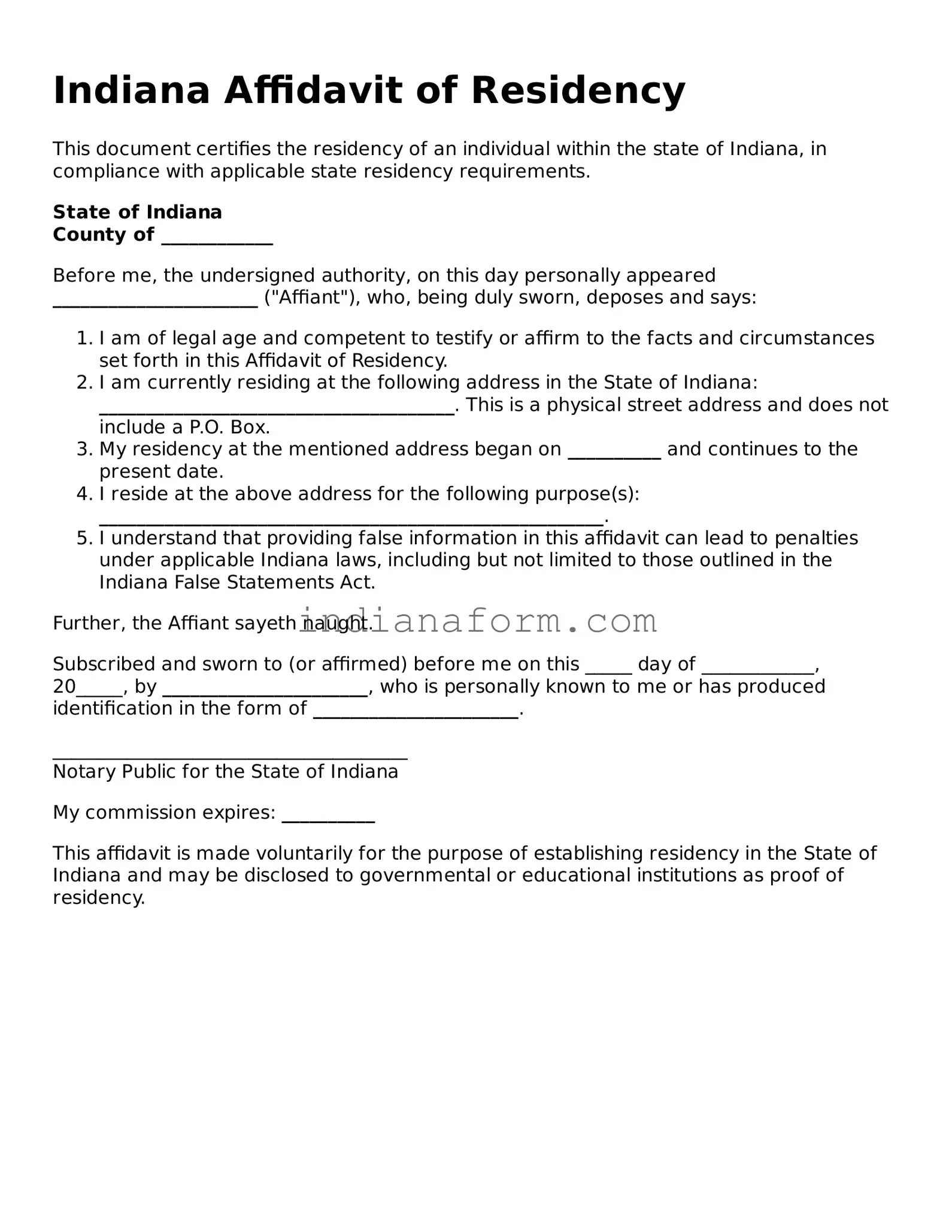What is an Indiana Affidavit of Residency?
An Indiana Affidavit of Residency is a legal document where a resident of Indiana formally states their current address. This affidavit is often required for various purposes such as enrolling in school, registering to vote, or for certain legal tasks.
Who needs to complete the Indiana Affidavit of Residency?
Any individual who needs to officially prove their residence within the state of Indiana may need to complete this form. It is most commonly used by parents or guardians for school enrollment processes or by individuals looking to establish residency for voting purposes.
What information is required on the form?
To complete the form, you'll need to provide personal details including your full legal name, the address you are claiming as your residence, and the length of time you've lived at that address. You'll also need to sign the affidavit, typically in the presence of a notary public, to affirm that the information provided is true and accurate.
Where can I obtain an Indiana Affidavit of Residency form?
This form is available from several sources, including local government offices, school administration offices, or online from various legal resources that provide standard legal forms for Indiana.
Is notarization required for the Indiana Affiditory of Residency?
Yes, in most cases, after completing the form, you must sign it in front of a notary public. The notary will then notarize the affidavit, officially validating your identity and your acknowledgment of the document’s contents.
Can I complete the Indiana Affidavit of Residency digitally?
While digital completion may be possible, whether you can submit the document electronically depends on the requesting organization's requirements. Some entities may require an original, signed, and notarized hard copy of the document.
How do I prove residency with this affidavit?
By signing the Indiana Affidavit of Residency, you declare under oath your residential address. To further prove residency, you might be asked to attach proof of address, such as a recent utility bill, a lease agreement, or a state-issued ID with your current address.
What happens if information provided in the affidavit is false?
Providing false information on an Indiana Affidavit of Residency is considered perjury. This is a serious offense and can result in legal penalties, including fines and potentially imprisonment.
Can the affidavit be used for any type of residency verification in Indiana?
While this affidavit is widely accepted for various types of residency verification, specific requirements may vary. It's essential to check with the entity requesting the affidavit to ensure it meets their specific needs for residency proof. For example, some entities may require additional documentation or have different forms specific to their verification process.
